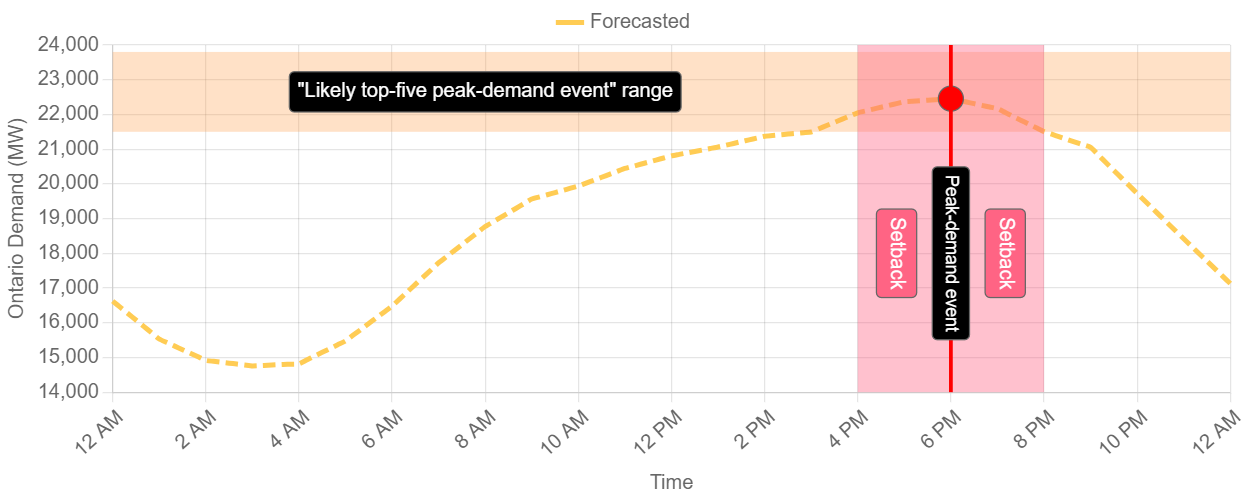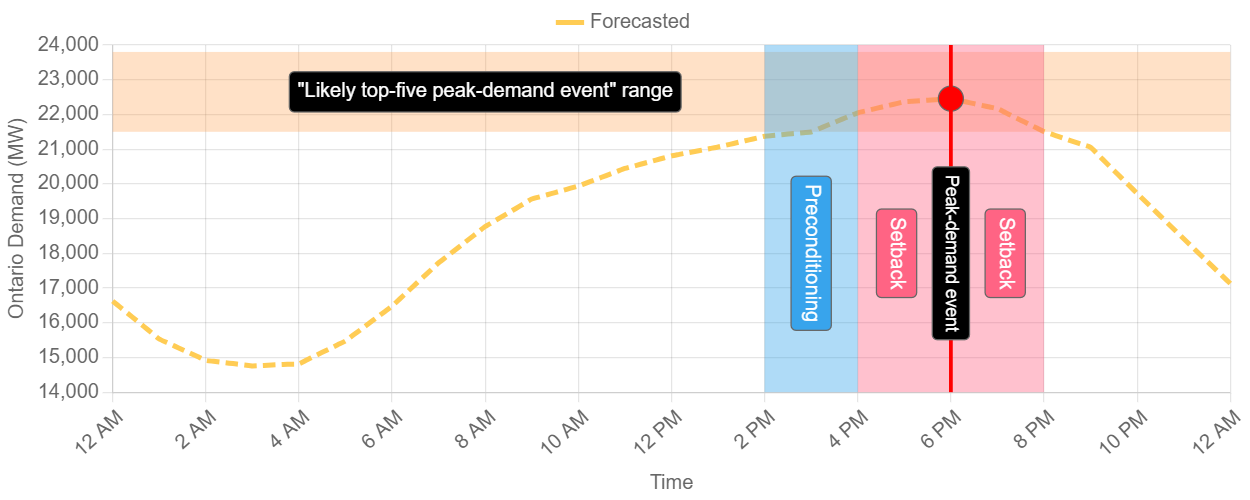EDC Building | Demand-Response | Setback Timer
- Zone
-
-
Adjustment
- Charge settings
-
Start Time
-
Duration
Setback Timer
The Setback Timer visualization.
Building's use large amounts of energy to condition its spaces - this is especially true in the cooling season when extreme outdoor air temperatures and solar heat gains drive
cooling energy demand. To reduce energy use during peak-demand events, a temporary setpoint adjustment is automatically applied to all thermostats for the duration of the event if a
peak-demand event is detected. This strategy comprises a pre-conditioning period and setback period.
The setback period comprises approximately 1-2 hours before and after a likely top-five peak-demand event. During this time, a temperature setpoint adjustment of 0.5-3.0°C higher than the
user setpoint will be applied automatically to all zones in the building. This adjustment is made to reduce or eliminate cooling loads during the period containing the likely top-five peak-demand event.

Approximately 1-3 hours leading to the setback period, a pre-conditioning period is experienced to provide a buffer for temperature free-fall during the setback period. Think of it like
retracting your legs before jumping. This buffer aims to reduce the likelyhood of occupant discomfort during the setback period, and allow for a greater range of temperature free-fall.


